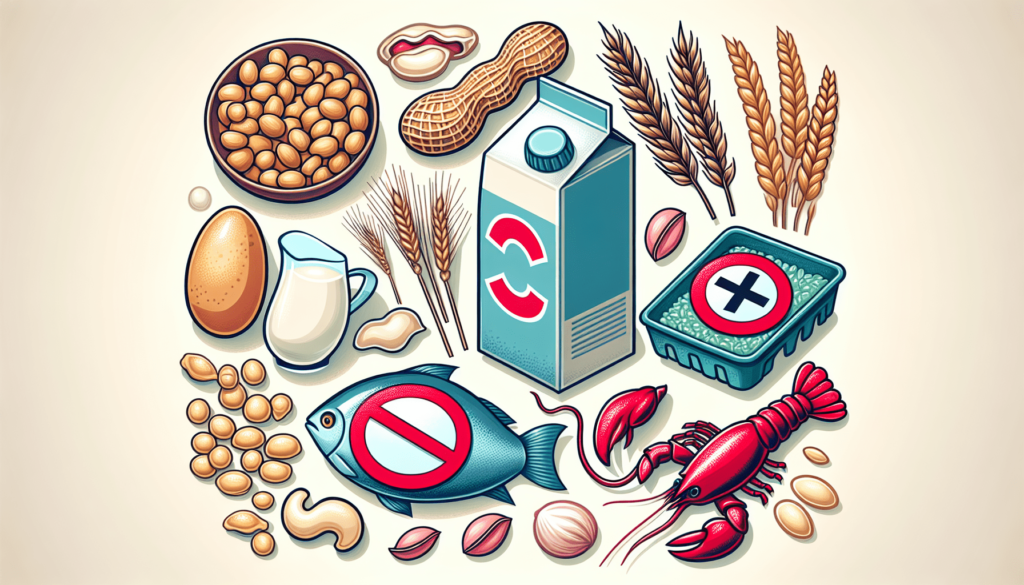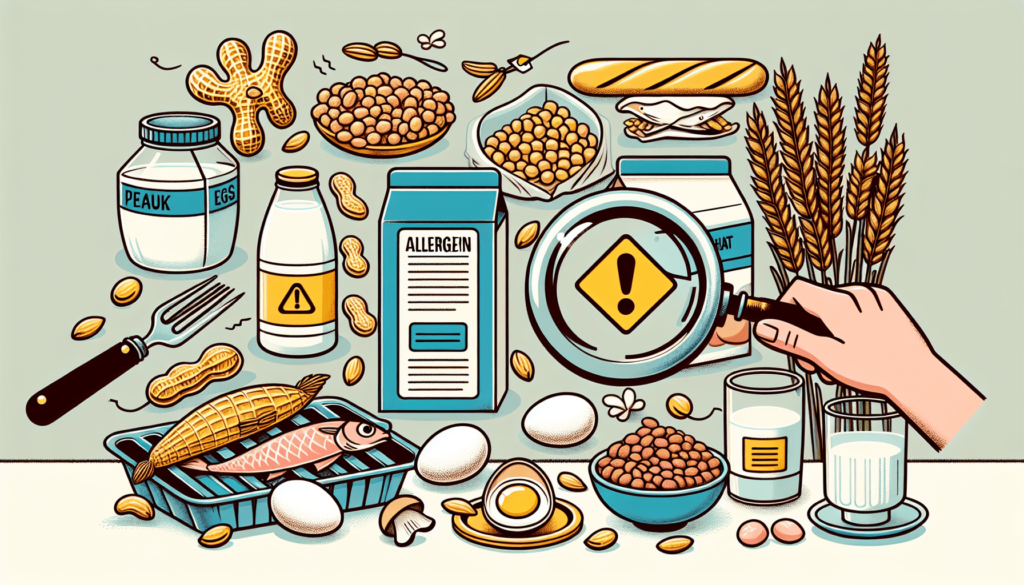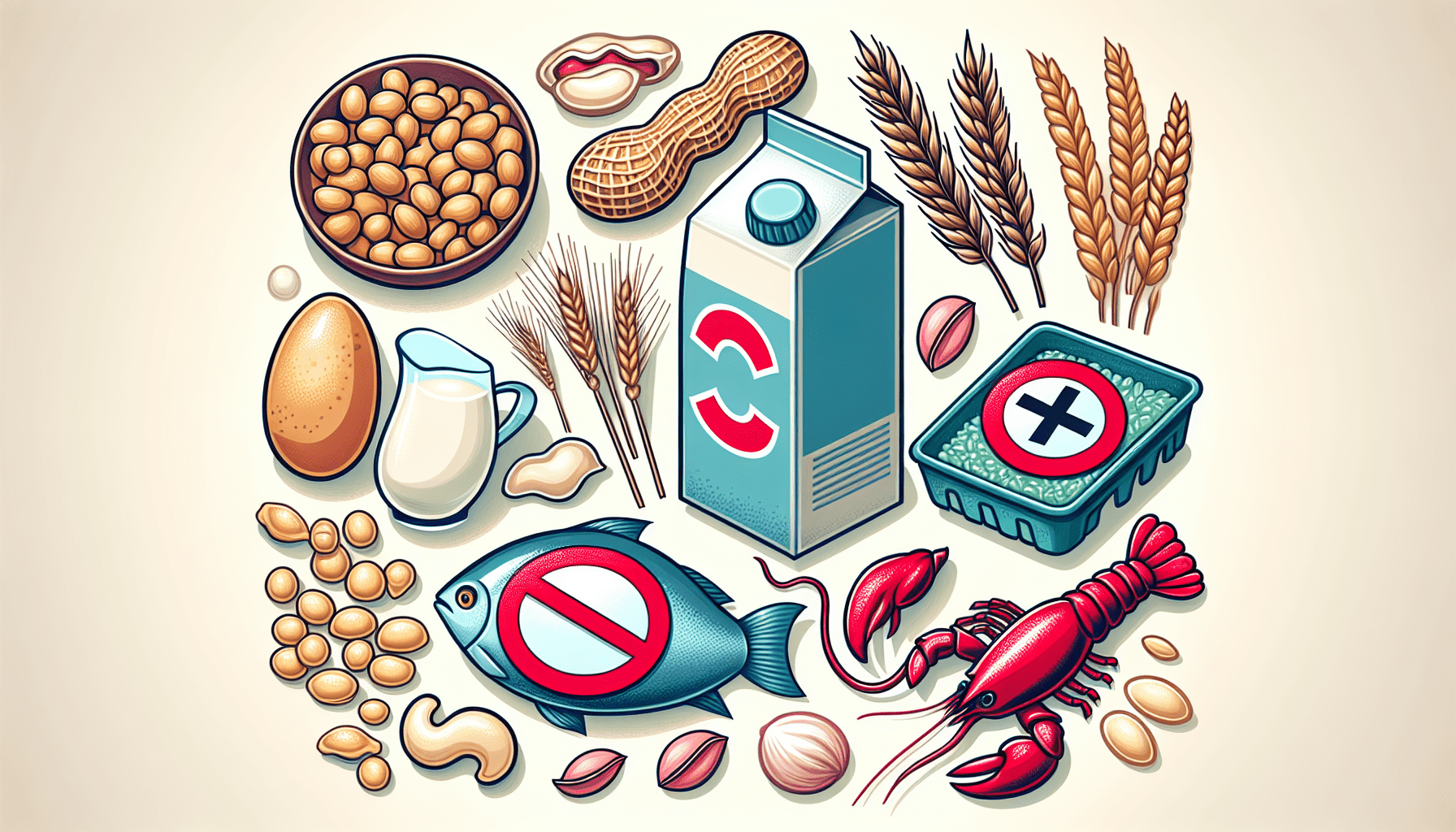Are you constantly feeling unwell after eating certain foods? Are you curious to know if you have a food allergy? In our article, “How To Identify Common Food Allergens,” we will guide you through the process of recognizing and understanding the signs of common food allergies. By providing you with essential information and practical tips, we aim to help you navigate your way towards a healthier and allergy-free lifestyle.

Understanding Food Allergens
Food allergens are substances that can cause an abnormal immune response when ingested, inhaled, or touched. When you have a food allergy, your immune system mistakenly identifies certain proteins found in food as harmful substances. This triggers a cascade of allergic reactions, which can range from mild symptoms to life-threatening emergencies.
Definition of Food Allergens
Food allergens are proteins that are primarily found in certain foods. These proteins are usually stable and resistant to heat, acid, and digestive enzymes, which allows them to elicit immune responses even after cooking or processing.
Common Symptoms of Food Allergies
Food allergies can manifest through a variety of symptoms, which can affect different parts of your body. Some common symptoms include hives, itching, swelling, nasal congestion, coughing, wheezing, gastrointestinal problems like nausea and diarrhea, and in severe cases, anaphylaxis.
Difference between Food Allergies and Intolerances
While food allergies and intolerances can cause similar symptoms, they are distinct conditions. A food allergy involves an immune response, while a food intolerance is a non-immune reaction. Intolerances often result from the inability to properly digest or metabolize certain substances in food, such as lactose intolerance. Food allergies, on the other hand, involve an immune system response to specific proteins in food.
Top Common Food Allergens
When it comes to food allergies, some ingredients tend to be more commonly problematic than others. The following are the top common food allergens:
Peanuts
Peanut allergies are one of the most well-known and potentially severe food allergies. Even trace amounts of peanuts can trigger severe reactions in individuals with this allergy.
Tree Nuts
Tree nuts, which include almonds, cashews, walnuts, and hazelnuts, are also frequent allergens. Allergy to one type of tree nut increases the risk of developing allergies to others.
Shellfish
Shellfish allergies are quite prevalent, with reactions typically occurring after consuming crustaceans like shrimp, crab, or lobster. Allergic responses can range from mild itching to severe anaphylaxis.
Fish
Fish allergies can be triggered by various species, including salmon, tuna, and cod. Reactions can be severe and may lead to anaphylaxis. It is important to note that fish and shellfish allergies are separate entities, and individuals can be allergic to either one or both.
Milk
Cow’s milk allergy is one of the most common childhood food allergies. Reactions can occur from consuming or being exposed to milk proteins, resulting in symptoms ranging from mild rashes to gastrointestinal distress.
Eggs
Egg allergies primarily affect children and can cause allergic reactions triggered by proteins found in egg whites or yolks. Egg allergies often subside in early childhood but can persist into adulthood.
Wheat
Wheat allergy is more common in children and can cause various symptoms such as digestive upset, hives, and even anaphylaxis. It is important to distinguish wheat allergy from gluten intolerance or celiac disease.
Soy
Soy allergies are prevalent, especially among infants and young children. Avoiding soy-based products is crucial for those with this allergy, as soy is a common ingredient in many processed foods.
Mustard
Mustard allergies can elicit mild to severe allergic reactions, with symptoms ranging from skin irritation to anaphylaxis. It is important to read labels carefully, as mustard can be found in unexpected food products.
Sesame
Sesame allergy is becoming increasingly recognized and can manifest as severe reactions. Sesame seeds and oil are commonly used in various cuisines and food products, so vigilance is crucial for individuals with this allergy.
Reading Food Labels
When navigating food labels, it is important to know how to identify allergens and potential risks. Here are some key aspects to consider:
Identifying Allergens in Ingredient Lists
Food allergens must be clearly declared on product labels. Look for allergens to be listed either in the ingredient list or in a separate “Contains” statement. It is crucial to read the entire ingredients list, as allergens can sometimes be listed under different names.
Understanding Precautionary Labeling
Some food products may carry precautionary statements such as “may contain” or “processed in a facility that also handles.” These warnings indicate a risk of cross-contamination with allergens, which may pose a threat to individuals with allergies. It is important to evaluate these warnings carefully and decide whether to consume the product based on your allergy severity.
Certification Symbols for Allergen-Free Products
Several certification programs provide labels indicating that products are free from specific allergens. Examples include a gluten-free symbol, a peanut-free symbol, or a dairy-free symbol. These symbols can help individuals with allergies identify safe products with greater confidence.
Cross-Contamination Risks
Cross-contamination occurs when allergenic proteins from one food come into contact with another food, leading to potential allergic reactions. Understanding cross-contamination risks is crucial for individuals with food allergies.
Definition of Cross-Contamination
Cross-contamination refers to the transfer of allergenic proteins from one surface to another, leading to the unintentional presence of allergens in non-allergenic foods. This can occur through direct contact, shared utensils, cutting boards, or even airborne particles.
Common Sources of Cross-Contamination
Cross-contamination can occur in various environments, such as kitchens or food processing facilities. Shared cooking surfaces, utensils, deep fryers, or grills can all serve as sources of cross-contamination if not properly cleaned between uses.
Preventing Cross-Contamination in the Kitchen
To minimize cross-contamination risks, it is important to keep allergenic foods separate from non-allergenic foods. This can be achieved by thoroughly cleaning all surfaces and utensils, using separate cutting boards and knives for allergenic foods, and storing allergenic ingredients in sealed containers to avoid any accidental contact.

Hidden Sources of Food Allergens
Identifying hidden allergens in food can be challenging, as many products contain unexpected sources of allergenic proteins. Here are some important considerations:
Common Foods with Hidden Allergens
Foods that you might not immediately associate with a particular allergen can sometimes contain hidden sources of allergenic proteins. For example, baked goods may contain hidden nuts, sauces and dressings often contain soy or wheat, and processed meats can have added milk proteins.
Processed Foods and Potential Risks
Packaged and processed foods can pose increased risks for individuals with food allergies. Manufacturers may use different ingredients, including allergens, in their formulations, making it crucial to carefully read labels and be aware of potential cross-contamination risks during processing.
Restaurant and Dining-Out Considerations
Eating out at restaurants can present challenges for individuals with food allergies. Cross-contamination is a common issue, as kitchens often handle multiple ingredients and use shared cooking utensils. Communicating your food allergies to restaurant staff and asking about ingredient lists and preparation methods can help reduce risks.
Food Allergy Testing
If you suspect you have a food allergy, it is important to consult an allergist for proper diagnosis. Here are some key aspects of food allergy testing to be aware of:
Types of Allergy Tests Available
Allergy tests can help identify specific allergens triggering your symptoms. Skin prick tests involve placing small amounts of allergens on your skin and measuring the reaction. Blood tests, such as IgE tests, measure the level of specific antibodies in your blood that are associated with allergic reactions.
When to Consider Consulting an Allergist
If you experience recurrent or severe allergic reactions after consuming certain foods, it is important to consult an allergist. They can perform tests to identify the specific food allergen triggering your symptoms and provide guidance on allergen avoidance and management.
Understanding Test Results and Their Limitations
Interpreting allergy test results requires expertise. It is essential to consult with an allergist to properly understand the significance of the results and any potential limitations. Allergy tests alone may not always provide a definitive diagnosis, and other factors, such as your medical history, will also be taken into consideration.
Managing Food Allergies
Managing food allergies involves implementing strategies to avoid allergens and handle potential allergic reactions. Here are some key aspects to consider:
Creating an Allergen-Free Kitchen
Designating allergen-free spaces in your kitchen can help minimize cross-contamination risks. Thoroughly cleaning surfaces, using separate utensils, and storing allergenic ingredients separately can all contribute to a safer environment.
Developing a Personalized Food Allergy Action Plan
Creating a personalized food allergy action plan is crucial, especially for individuals at risk of severe allergic reactions. This plan should include steps to take in case of accidental exposure, such as carrying epinephrine auto-injectors, informing friends and family members, and knowing when to seek emergency medical assistance.
Navigating Social Situations with Food Allergies
Social situations can present unique challenges for individuals with food allergies. Communicating your allergies to friends, family, and event hosts is important. Sharing safe food alternatives, educating others about cross-contamination risks, and advocating for your needs can help create a supportive environment.
Seeking Professional Help
While managing food allergies can be done independently, it is important to involve healthcare professionals for guidance and support. Here are some important considerations:
When to Consult a Healthcare Professional
If you experience severe allergic reactions, uncertainty about your allergies, or struggle to manage your symptoms, it is important to consult a healthcare professional. They can provide an accurate diagnosis, offer personalized advice, and help you develop an appropriate management plan.
Finding an Allergist or Immunologist
Consulting with an allergist or immunologist is crucial for individuals with food allergies. These specialists have extensive knowledge in diagnosing and managing allergic conditions. You can find allergists through referrals from your primary care physician or by searching professional directories and associations.
Importance of Medical Supervision in Managing Food Allergies
Medical supervision is instrumental in successfully managing food allergies. Regular check-ups with healthcare professionals allow for ongoing monitoring, evaluation of treatment effectiveness, and adjustments to your management plan as needed. Working closely with a healthcare team can provide you with the necessary support for optimal allergy management.
Educating Friends and Family
Building a support network of friends and family members who understand and can help you manage your food allergies is crucial. Here are some tips for educating your loved ones:
Explaining Food Allergies to Loved Ones
Educating your loved ones about the nature of food allergies, the specific foods you’re allergic to, and the potential risks associated with exposure is important. Clear communication and open dialogue can help create an environment of understanding and support.
Empowering Others to Support Individuals with Allergies
Encouraging your friends and family to learn about food allergies, cross-contamination risks, and proper emergency response techniques can empower them to actively support you. Sharing educational resources, such as brochures or websites, can help them gain knowledge and confidence in managing your allergies.
Sharing Resources and Guidelines on Allergen Avoidance
Providing your loved ones with resources, such as lists of safe foods, ingredient substitution ideas, or allergy-friendly recipes, can enable them to make informed decisions when cooking or hosting meals. Sharing guidelines on reading food labels and understanding precautionary labeling can also help them navigate potential allergen risks.
Staying Updated on Food Safety
Staying informed about food safety practices, recalls, and new developments in food allergen research is crucial for individuals with food allergies. Here are some ways to stay updated:
Monitoring Food Recalls and Alerts
Regularly checking for food recalls and alerts can help you stay informed about potential risks. Subscribe to relevant mailing lists or visit official government websites that provide up-to-date information on food recalls.
Joining Online Food Allergy Communities
Joining online communities or forums dedicated to food allergies can provide opportunities for connection and information sharing. These platforms allow you to learn from others’ experiences, discover new resources, and stay updated on the latest news and research.
Continuing Education on Food Allergens and Safety
Food allergen management practices evolve as new information emerges. Continuing your education on food allergens and safety through reputable sources, such as medical journals, educational webinars, or conferences, can help you stay informed about best practices and advancements in the field.
By understanding food allergens, recognizing common allergens, reading food labels, managing cross-contamination risks, and seeking professional help, you can effectively navigate life with food allergies. Educating your loved ones and staying updated on food safety practices are equally important for a safe and fulfilling experience. Remember, with proper management and support, you can live a healthy and enjoyable life even with food allergies.
